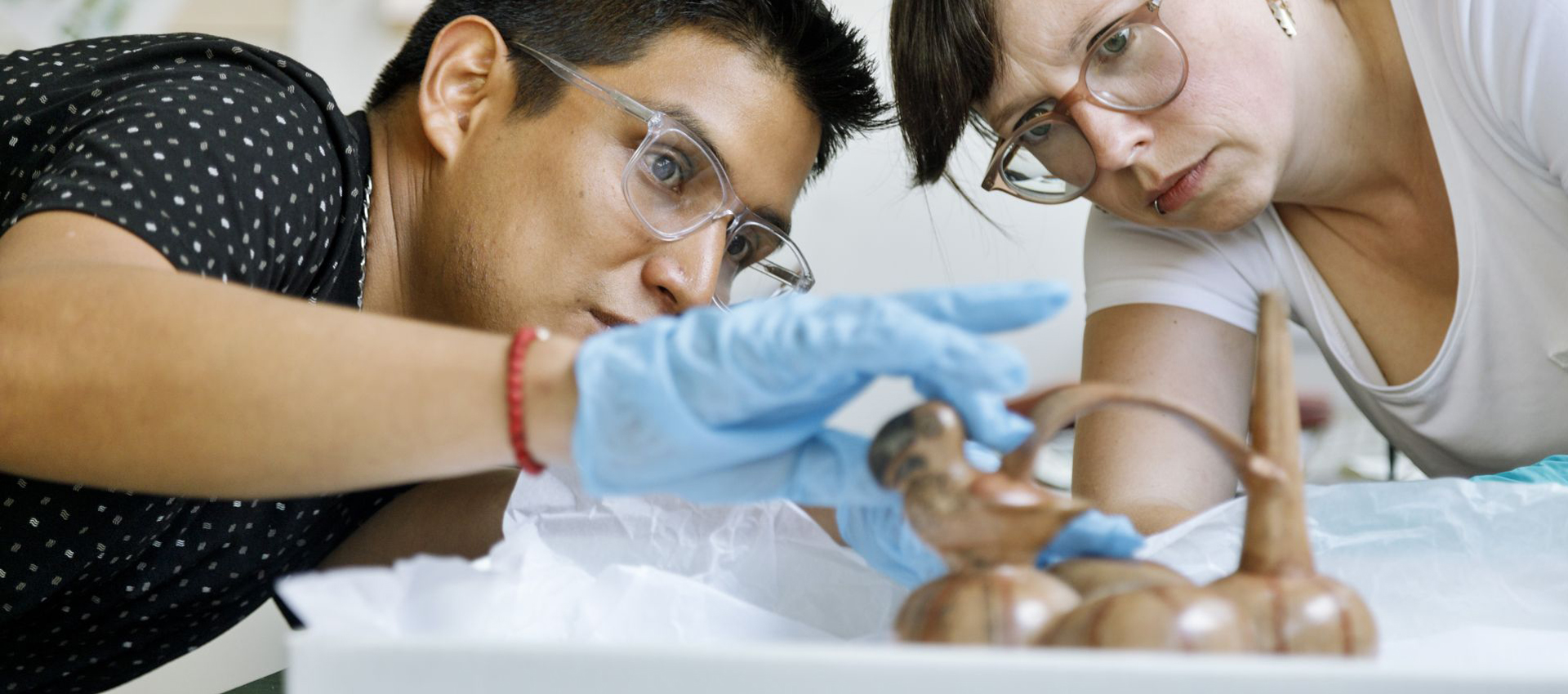How the project “The Collaborative Museum” is changing the Ethnologisches Museum and the Museum für Asiatische Kunst – including the people working on it.
Set to run until the end of 2025, the large-scale project called “The Collaborative Museum” promises to forge new paths in transcultural museum work. The Ethnologisches Museum and the Museum für Asiatische Kunst endeavour to produce “multiperspective approaches to exploring the collections” and will “test out new formats for collaborating with an international community of museums and academics, as well as with representatives of communities of origin”.
What is a “collaborative museum”?
Anna Szöke: “The Collaborative Museum” currently comprises 40 international projects in addition to events and a fellowship programme with numerous participants from all over the world. Our main focus is, of course, our work with the collections of the Ethnologisches Museum und the Museum für Asiatische Kunst – but not only. The entire Stiftung Preussischer Kulturbesitz (SPK) is in focus. Here’s an example: the Gipsformerei together with the restoration department of the Ethnologisches Museum recently presented the Guatemalan Museo Comunitarío Yalambojoch with two hand-made casts of objects from the Ethnologisches Museum’s collection. The replicas will be used to impart Indigenous knowledge – a wonderful collaboration with a small local association, the Associación Awum Te.
How did this project come about in the first place?
Alexis von Poser: The idea came into being when we opened the Humboldt Forum’s eastern section in September 2022. After the pandemic, we were finally able to invite our partners, with whom we had designed the exhibition areas. This gave us the opportunity to discuss how to proceed with our museum. Our partners expressed the explicit wish to remain involved. They had literally been waiting for a new museum approach for the ethnological collections.
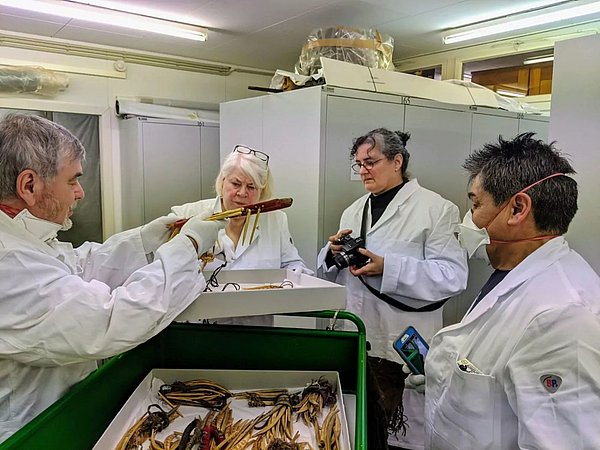
In other words, the invitation to the world in the opening speeches was quite serious.
von Poser: Absolutely! We have increased the number of staff in the relevant areas of the museums because we know that our plans are really ambitious. All our colleagues – from our permanent staff to freelancers and fellows in the Collaborative Museum – are very enthusiastic about it.
Szöke: Just think of our extensive variety of topics and research areas alone! We had restorers from Mexico as guests, for example, who explored the collection of the Ancient Americanist and collector Eduard Seler. And in the summer, we welcomed several international colleagues to design two permanent educational and outreach formats for the Humboldt Forum. In a nutshell, we are not only involving curators but all disciplines and departments.
von Poser: The Ethnologisches Museum and the Museum für Asiatische Kunst have evolved thanks to “The Collaborative Museum”. We created a new curatorial position for transcultural cooperation in the run-up to the project, as well as one for contemporary art in a global context and one for visual anthropology. In addition, the SPK established four permanent positions for provenance research to better study the collections of both museums. Needless to say, it takes quite a lot of energy to invite guests to Berlin and, if necessary, to have objects regularly travel around the world in the future. But we have got plenty of energy!
The Ethnologisches Museum and the Museum für Asiatische Kunst have evolved thanks to “The Collaborative Museum”
Alexis von Poser
Are there any international role models for your project?
von Poser: We are far ahead in this regard. We get the same feedback from our partners who often work together with other institutions worldwide. Of course, there is also collaborative work in other museums but the scale of our project is in a league of its own. When a photographic artist from Nepal comes together with a museum director from Tanzania and a fisherman from the Amazon region and they talk about how to deal with collections of cultural artefacts, that’s not something you see every day.
Many of the fellows and international guests believe in an approach to cultural heritage that is very different from our Western one. How do these people react to what they find here?
von Poser: In many regions of the world, the museum as an institution is seen as a European export product from the colonial period that sometimes arrived there under rather unsavoury conditions. Depending on where they come from, our partners are more or less familiar with such institutions. In fact, the aspect of collecting and preserving is pretty unusual for many of them. As the objects are often still closely linked to today’s material culture in a region, people’s knowledge of them is much more practical and common, and they do not see the need to preserve it. It is hardly surprising then that a museum concept seems very abstract. But we also have guests from regions where museums are part of the cultural landscape. Many regions of the world have also appropriated the institution of the museum and transformed it for themselves.
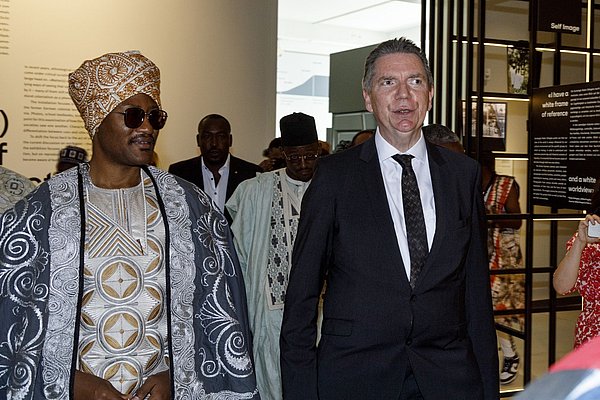
How do you communicate what you are doing?
von Poser: In a first step, we want to develop exhibitions for the Humboldt Forum, even if not every project is suitable. We also welcome other formats, such as the Knowledge Showcase at the Forschungscampus Dahlem, where we work on the collections and can provide information about what we do. Ideally, we use new findings to revise the permanent exhibition or design interventions. Moreover, as Anna Szöke has already mentioned, the projects may always lead to additional events.
Szöke: We also offer our podcast series “Gegen die Gewohnheit” (Going Against the Grain). Next year will be particularly exciting, as many of the projects that will result in exhibitions at the Ethnologisches Museum are now in their final planning stage. Some of the fellows working on these projects will be joining us at the end of the year.
We learn with our partners what we all need to work together in a collaborative way
Anna Szöke
If you could reopen the Humboldt Forum once again, would it look different due to your experiences with this project?
von Poser: For sure! After all, the Humboldt Forum can only be successful if it never stops evolving and instead keeps seeking and pursuing new paths. Needless to say, we see many issues differently today and would change the exhibition planning and formats in many places based on our experience in collaborative work. This is actually happening, however, as we are constantly revising the exhibitions and updating them with our international partners.
What do your partners take back to their home countries? How are the results anticipated in Mexico, Kenya, or Alaska?
Szöke: Kenya is a good example: we have a rather large project there and are currently preparing several workshops and an exhibition on site. This will soon also be on display at the Humboldt Forum.
von Poser: People take home very different things. While some are interested in digital copies, others seek information about the collections, and still others are looking for partnerships and lasting relationships. And, of course, we are also talking about the repatriation of objects.
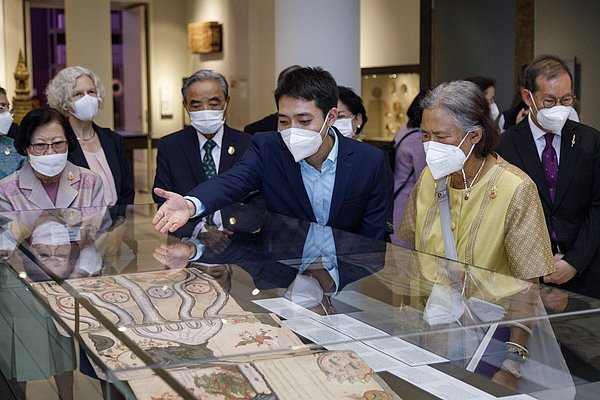
The Collaborative Museum is also intended to give rise to a new museum practice and emancipate itself from a Eurocentric perspective. Do you believe that this and possible follow-up projects actually have the power to bring about fundamental change?
von Poser: Yes, I do. Our society today has very different demands and expectations of our work. I truly believe that we need to change the way we think. In the future, visitors will expect exhibitions to include multiple perspectives and no longer be conceived from a single point of view.
Szöke: We learn with our partners what we all need to work together in a collaborative way. We have very specific ideas and proposals that have already been incorporated into the SPK’s reform process.
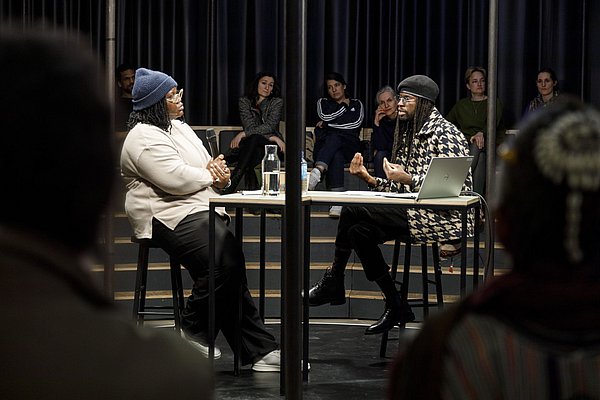
Could you give us an example of such a proposal?
Szöke: Ultimately, it’s about working together as equals. And if our partners also make it clear how we can reduce bureaucracy and simplify our cooperation, the entire SPK will benefit from our findings.
The Collaborative Museum certainly requires a lot of trust and openness. What did you have to contribute and how did this project change you?
Szöke: It is essential for us to create safe spaces, both institutionally and in personal collaboration. People expect this and consider it the basis of any long-term, fruitful collaboration. Personally, I learned to remain calm and patient. We are pursuing a very ambitious goal. This is no sprint but a marathon and we need to keep pushing the boundaries of the museum.
von Poser: I particularly valued our absolute commitment to transparency with regard to the collections. We disclosed everything from the outset: What do we have, where and how was it acquired, where might there still be gaps in our knowledge? In addition, many objects as well as the complete acquisition files from 1830 to 1947 have already been digitally recorded. We are fully aware of what to expect – we might be confronted with a flood of enquiries. Nevertheless, this transparency lays the groundwork for our cooperation. Personally, I always believed that our collaboration calls for a great deal of commitment: you are held accountable and need to be willing to emphasise: I want to be part of an institution on a good path.
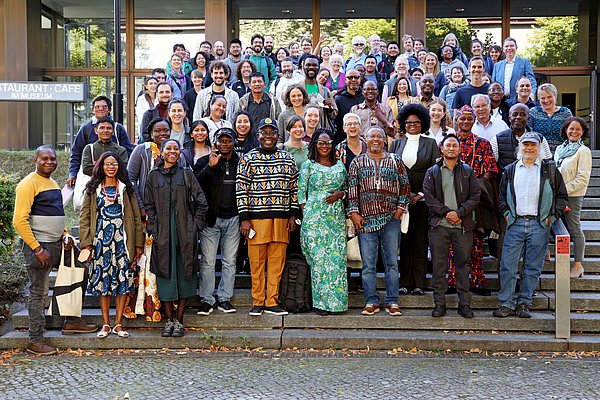
Are there also any conflicts?
von Poser: Yes, of course! It is a highly emotional moment when guests visit us and see the collections. One problem we have, for example, is that the collections have been treated with insecticides for decades and are, therefore, not fully accessible. We are doing our best to clean the objects and make them available for collaboration, but it’s not easy. Still, we also want to be fully transparent about this aspect, as we are responsible for the condition of the objects while they are with us. We always try to find the best possible way with our partners to fulfil both their wishes and our mission to preserve the collections.
